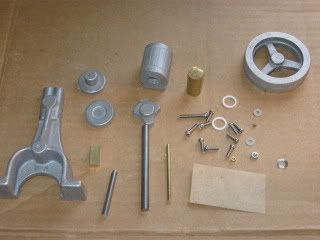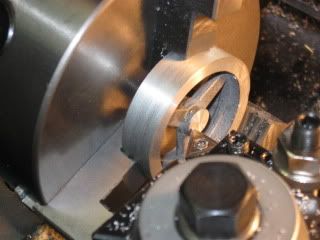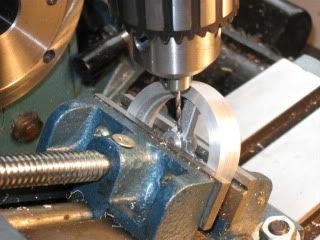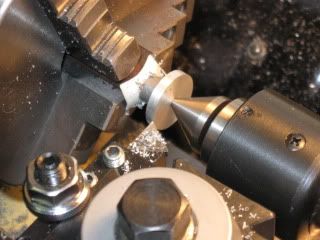I bought this kit a few months ago before I found a local source for materials. The castings a some version of aluminum and the rest of the kit is made up of brass and steel. Here are the kit and contents.

Something that I did not expect when I bought the kit was the need for taps and dies that are not readily available locally. I had to purchase 3-48 and 5-40 sets. Fortunately the big brown truck will drop them off a couple of days after I order supplies from Enco. I am amazed at their service.
I decided to deviate from the plans for the flywheel. The plans called for knurling the driveshaft and then pressing on the flywheel. I did not want to do that because if you do, it is not easy to take it apart to make any modifications. I decided to use a grub screw.


I made a mandrel to finish the bottom cap. I used a piece of 1/2" CRS with a locator pin and double backed tape. The tape that I used is a product that I use with my wood lathe.


The metal that was used for the castings is quite soft and difficult to machine. It is very difficult to polish it. I used a progression of abrasives starting from 220 grit and ending up with crocus cloth.
Small particles of metal stick to the abrasive sort of the way that varnish gums up paper when it has not hardened enough when you are sanding it.
I have completed all of the machine work and have started to assemble the engine. Unfortunately I dropped the wave washer that furnishes tension on the cylinder and it is someplace on the floor of my shop. I spent an hour crawling around yesterday looking for it to no avail and will resume my search later today. I amy hav weto modify tha design to work around my lack of the part. I am beginning to appreciate the benefits of using a jewelers apron when assembling a project.
My next project will be a "Two Poster" that was designed by Bill Reichart. It is pretty and doesn't require any castings.
Thanks for all of the information that I have gleaned from this board.
Jack